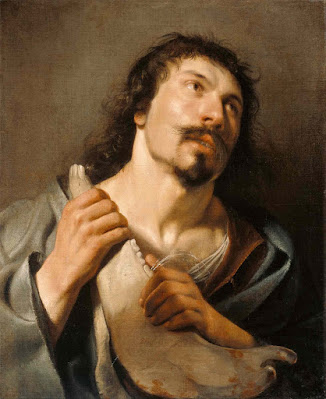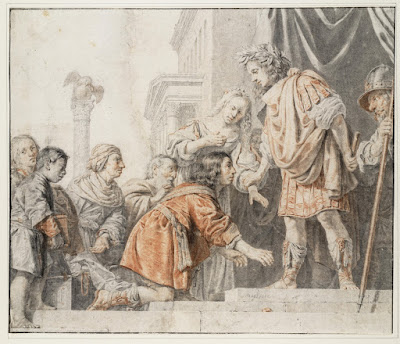 |
| Salomon de Bray Young Woman combing her Hair ca. 1635 oil on panel Musée du Louvre |
 |
| Salomon de Bray Youth wearing a Wreath 1635 oil on panel Gemäldegalerie Alte Meister, Dresden |
 |
| Salomon de Bray Portrait of a Young Woman 1636 oil on panel Museum of Fine Arts, Boston |
 |
| Salomon de Bray David with Sword 1636 oil on canvas Getty Museum, Los Angeles |
 |
| Salomon de Bray Samson with Jawbone of an Ass 1636 oil on canvas Getty Museum, Los Angeles |
 |
| Salomon de Bray Judith with the Head of Holofernes 1636 oil on panel Museo del Prado, Madrid |
 |
| Salomon de Bray Portrait of a Boy 1636 drawing Harvard Art Museums |
 |
| Salomon de Bray Portrait of the twins Clara and Aelbert de Bray 1646 oil on canvas Scottish National Gallery, Edinburgh |
 |
| Salomon de Bray Martyrdom of St Catherine of Alexandria 1654 drawing Teylers Museum, Haarlem |
 |
| Salomon de Bray Family of Darius before Alexander the Great 1655 drawing Teylers Museum, Haarlem |
 |
| Salomon de Bray The Continence of Scipio ca. 1655 drawing Teylers Museum, Haarlem |
 |
| Salomon de Bray Pentecost before 1664 drawing Metropolitan Museum of Art, New York |
 |
| Salomon de Bray Martyrdom of St Lawrence 1652 oil on canvas Los Angeles County Museum of Art |
 |
| Salomon de Bray Liberation of St Peter before 1664 oil on panel Musée Calvet, Avignon |
 |
| Jan de Bray Portrait of the Artist's Parents, Salomon de Bray and Anna Westerbaen ca. 1660-64 oil on panel National Gallery of Art, Washington DC |
"Architect and painter Salomon de Bray spent nearly his whole life in Haarlem, where Mannerist artists Cornelis van Haarlem and Hendrick Goltzius were probably his first teachers. He painted mostly religious and mythological scenes, along with portraits, landscapes and genre pictures. An active and accomplished draftsman, De Bray made architectural drawings and highly finished preliminary studies for paintings. His artistic development is not well documented. In 1635 he seemed to favor half-length figures, which at that time had become rather old-fashioned. By about 1640 his work showed the influence of Rembrandt van Rijn's chiaroscuro. . . . Sensitive and intelligent, De Bray published a collection of love poems and a book on contemporary architecture. In 1663-1664 the plague struck the De Bray family, killing both parents and four of their ten children. The surviving sons Jan, Dirck, and Joseph became painters. [In fact, Joseph also died in the plague. Only Jan and Dirck created significant bodies of work.]"
– from biographical sketch at the Getty Museum, Los Angeles